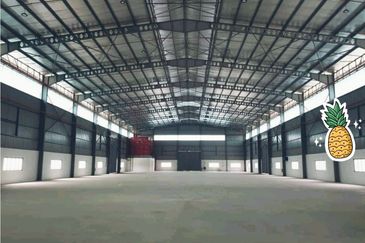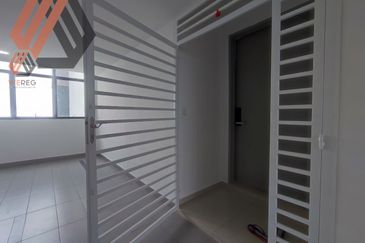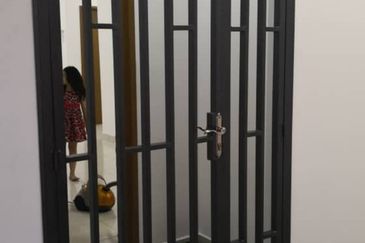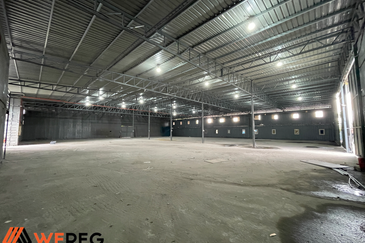
ONLY a handful of about 200 attendees at the recent Real Estate Developers’ Association of Singapore (Redas) property market update seminar on July 7 spent at least S$200 (RM630) in a Singapore shopping mall in recent months, according to a straw poll conducted by Knight Frank Singapore’s Wendy Low, executive director of retail, and Alice Tan, head of consultancy and research.
Singapore is ranked seventh on Expedia’s list of the “World’s 25 best shopping cities”, behind New York City, Berlin, Los Angeles, London, Kuala Lumpur and Tokyo, in that order. Expedia ranked the cities based on their scores in three areas: Value for money (Singapore scored eight out of 10); friendliness towards tourists (eight out of 10); and annual tourist numbers (seven out of 10).
Stiff competition has resulted in a drop in average retail spending per tourist: 16.4 million tourists visited Singapore in 2016, a 13.1% increase over the 14.5 million in 2012. However, the amount spent per tourist fell 3.1% from US$386 (RM1,650) to US$374 between 2012 and 2016, according to data compiled by Knight Frank.
Retailers who participated in Knight Frank’s Retail Sentiment Survey 2017 ranked value for money as the most important element of the in-store experience customers are looking for. Being able to offer better value for money could attract more spending by Singaporeans as well.
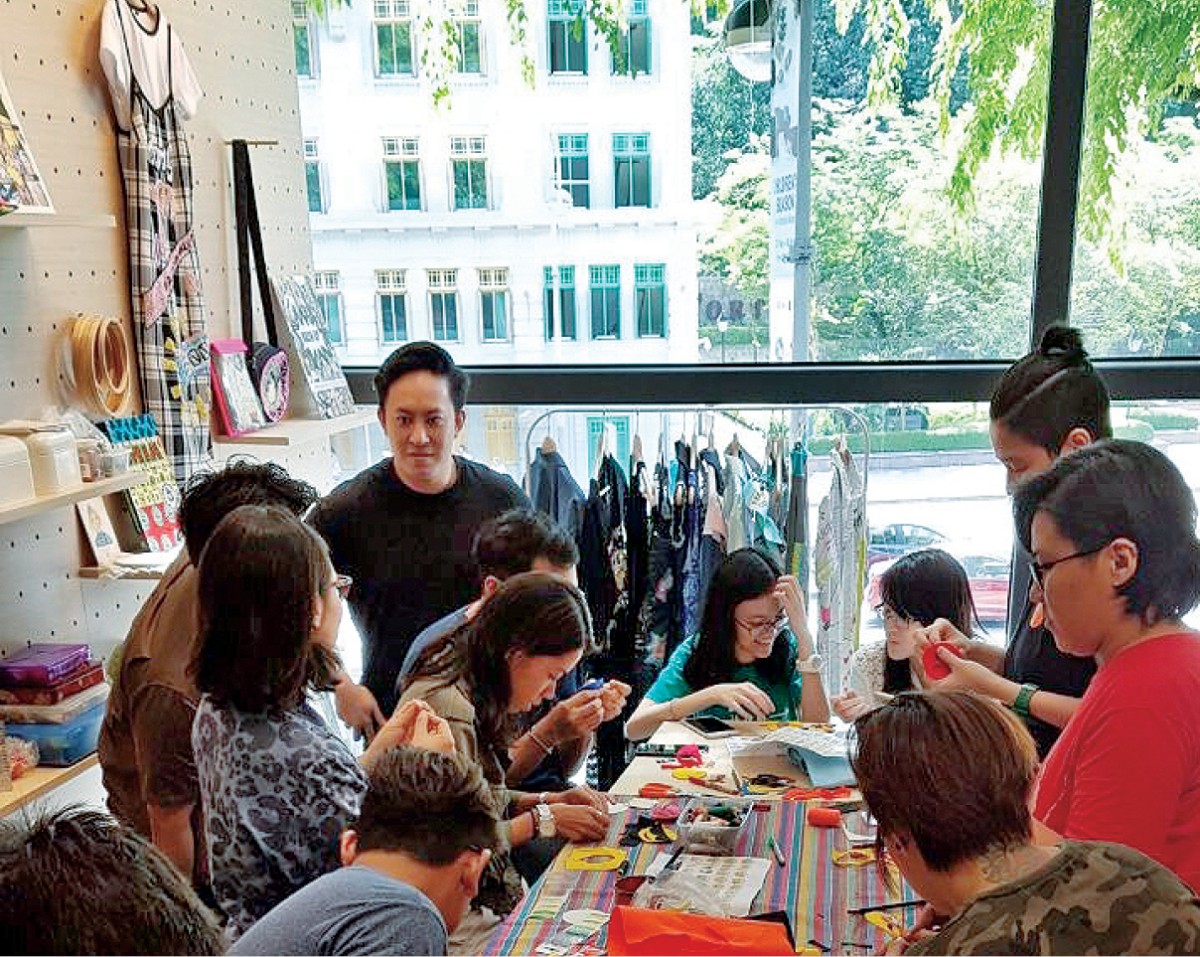
Bricks and mortar still important
A joint study by Temasek Holdings and Google found that e-commerce made up 2.1% of total retail sales in Singapore in 2015 — the highest proportion among Southeast Asian countries. E-commerce is set to take up a larger share of the retail pie — an estimated 6.7% of total retail sales — by 2025.
“As the retail landscape gets progressively digitised, physical retailers without an online presence will find themselves stuck in the doldrums with e-tailers hot on their heels,” says Low.
Despite the need for retailers to grow their online presence, there is good news for landlords: 86.5% of the retailers surveyed by Knight Frank rated the importance of developing and maintaining a physical presence as at least five on a scale of six.
New retail concepts
“A lot of people say our malls are cookie-cutter and lack exciting experiences,” says Low. “We want our retail to be experiential. Basically, it is an environment that is more than just shopping; that gives you other opportunities to enjoy yourself.”

Low cites several examples of malls that offer new retail concepts. Siam Discovery in Bangkok offers experiential retail, she notes. The mall reopened in May 2016 after closing for a year for a THB4 billion (RM512 million) asset enhancement. With the mall billed as “The Exploratorium” — a lifestyle laboratory — the goods there are organised according to style instead of brand or category over 430,600 sq ft of space on eight floors. The mall’s interactive features include a media wall where visitors can upload their photos for display.
Hong Kong-listed New World Development has two K11 Art Malls — one in Hong Kong and the other in Shanghai. The brand philosophy behind these malls is “an art playground where culture, entertainment, shopping and living revolve around art”, says Knight Frank’s Low. When a multi-sensory art, architecture and music exhibition called Urban Sense was held at K11 Art Mall in Hong Kong from March to May, it saw a 12% increase in the number of visitors.


Malls are also increasingly becoming a hybrid model of art and commerce, incorporating art galleries and museum spaces. In addition to displays of local and international artwork, exhibitions and performances are held there too. An example is Pablo Picasso’s Parade exhibition at the IFC Mall in Central, Hong Kong, in 2004: It reportedly drew an additional 50,000 visitors to the mall every day.
Low says the Mall of Emirates in Dubai is the first in the Middle East to introduce a “hands-free” shopping experience. Visitors can drop off their shopping bags at collection desks and pick them up at the end of their visit or arrange for them to be delivered. This frees shoppers to continue to shop, dine and enjoy themselves without being burdened by shopping bags.
In Singapore, sports retailer Decathlon offers a “Click and Collect” option whereby shoppers can order items online and pick them up at its physical stores. The stores also have areas and facilities to allow customers to test the sporting equipment before purchase. Decathlon’s biggest store in Singapore, spanning 43,000 sq ft of space at FairPrice Hub in Joo Koon, boasts the city state’s first slack line, a golf-putting green, a mini football arena and a running track.
The new Funan
An example of “a leading retail innovation platform” in Singapore is the new Funan, which is set to open in 2019. Formerly called Funan DigitaLife Mall, it closed on June 30 last year to undergo a S$560 million transformation by CapitaLand Mall Trust.
The new Funan will be the first mall to have smart tech integrated into its physical space. This includes CCTV cameras and video analytics that can track data such as footfall throughout the mall and traffic into each individual shop, which will be shared with the tenants.
The Funan show suite provides an idea of how Funan will go beyond traditional retail: It has partnered local creative talents to host a variety of lifestyle programmes such as craft workshops, film screenings, product launches and community talks.
“Shopping is just one of the things people want to do with their time. The retail experience is so much more than that,” says Kevin Siew, vice-president of retail development at Funan.

Funan is located in the heart of Singapore’s civic and cultural district. It sits on a 124,457 sq ft site and, when completed in end-2019, will have 500,000 sq ft of retail space, 266,000 sq ft of Grade-A office space and 121,000 sq ft of co-living apartments. The six-storey retail component will extend from Basement 2 to Level 4, with two six-storey office towers stretching from Levels five to 10. There will be 279 co-living apartments housed in a nine-storey tower from Levels 4 to 12. There will also be a co-working space on Levels 4 and 5.
To enable people to learn more about the origin of their food, there will be a 5,300 sq ft urban farm and a 6,900 sq ft edible garden at the roof terrace of Funan, which also houses farm-to-table restaurants. Visitors can tuck into ingredients from the edible garden, or “adopt a plot” to grow their own produce on the rooftop. Food trucks will also be brought into the development to jazz up the F&B offerings.
Tenants such as T K Foto will offer more than retail by organising talks, workshops and other events to add an educational element to Funan’s offerings. Another tenant is indoor climbing gym operator Climb Central, which will operate a 50-lane climbing facility at the mall, with the highest wall, measuring 15m, extending from Basement 2 to Level 2. The facility, the tallest indoor rock wall in the CBD, will be beginner-friendly and offers an opportunity for anyone to learn climbing.
Instead of traditional anchor tenants occupying 25,000 sq ft or more of space, there will be smaller anchor tenants from various trades at Funan, Siew says. The largest is Golden Village Multiplex, which will be opening a seven-screen cinema offering the first-of-its-kind multi-sensorial experience.

Another anchor tenant will be W!ld Rice, Singapore’s leading professional theatre company, it will take up 18,000 sq ft of space and build a 380-seat theatre that will be fully run by the artistes. According to Siew, mid-sized arts venues with 400 to 500 seats are in high demand and there is a three-year waiting list for space at the Victoria Theatre & Concert Hall and the Drama Centre at the National Library building. As such, Funan will be “a home for and champion [of] local creators”.
At Funan, customers will also be able to place orders online and collect their purchases at their convenience. Those who shop in-store can enjoy hands-free shopping. There will be an area for customers to pick up their purchases, on foot or drive-through.
Thirty per cent of the retail space at Funan had been taken up as at end-June.
Omnichannel retail
“Online presence and shopping is not enough on its own,” says Knight Frank’s Tan. “There is a need to offer a seamless online and offline experience.”
An example of a retail sector that has successfully bridged that divide would be F&B. Low says diners, like retail shoppers, expect F&B brands to have an online presence and offer the option to order online using various modes of payment; in other words, to be omnichannel.

By partnering food delivery apps such as UberEats, Foodpanda and Deliveroo, many F&B brands offer the option of online orders for delivery, in addition to dining in. This helps F&B operators to reach more customers and bring in more sales. For example, fast food chain Texas Chicken reportedly saw an 8% jump in sales after listing its outlets on Foodpanda.
Rents for F&B tenants typically comprise a psf component plus a percentage of the gross turnover, which includes online sales minus delivery costs, according to Letty Lee, executive director of retail services at CBRE Singapore. In other words, landlords get a cut of online sales and benefit from tenants that embrace omnichannel retail.
Growing appetite for F&B
“The retail tenant mix ratio for F&B outlets has increased from between 20% and 25% to 35% and 40% in recent times,” says Low. “Many malls have food courts or food atriums as anchor or junior anchor tenants.”
According to CBRE’s recent millennial survey, on average, those aged between 20 and 29 eat out 9.7 days a month. Millennials also like to post pictures of their meals on social media, which helps to promote the restaurants.
“The growth of the F&B sector continues to be supported by consumers’ tendency to eat out and landlords’ strategy of extending their F&B offering as a way to enhance their retailtainment elements and defend their portfolios against e-commerce,” says Lee.
Global retailers retain a strong appetite for expansion in Asia-Pacific and continue to enter new markets across the region, says CBRE in a recent report. In particular, the F&B sector continued to drive retailer expansion in the region last year and more landlords are approaching high-profile restaurants and F&B groups to open outlets in their malls to boost publicity and footfall.
However, the growth potential of F&B may be reaching saturation point, Lee cautions. The number of such establishments in Singapore grew 5.6%, from 6,872 in 2014 to 7,260 in 2015. Over the same period, the total operating receipts for Singapore’s F&B sector rose only 0.4%, from S$8.93 billion to S$8.97 billion.

“Therefore, landlords have to continue reinventing and repositioning their malls to widen the source of traffic,” says Lee.
This article first appeared in The Edge Property Singapore, a pullout of The Edge Singapore, on July 24, 2017.
For more stories, download TheEdgeProperty.com pullout here for free.
TOP PICKS BY EDGEPROP

Telok Panglima Garang Industrial Zone
Telok Panglima Garang, Selangor

Taman Perindustrian Air Hitam Phase 1
Klang, Selangor

Taman Perindustrian Air Hitam Phase 1
Klang, Selangor





